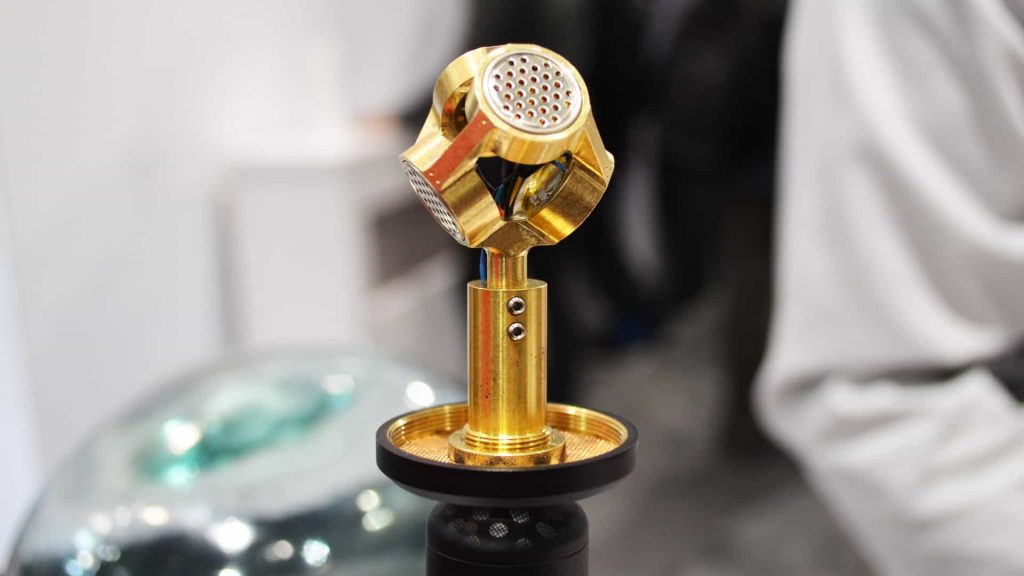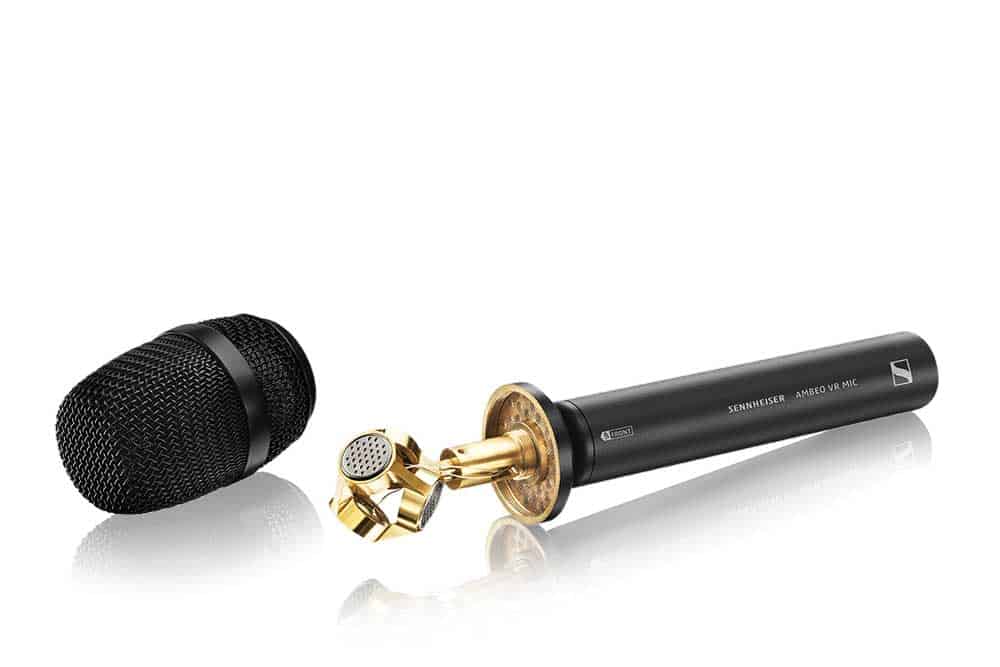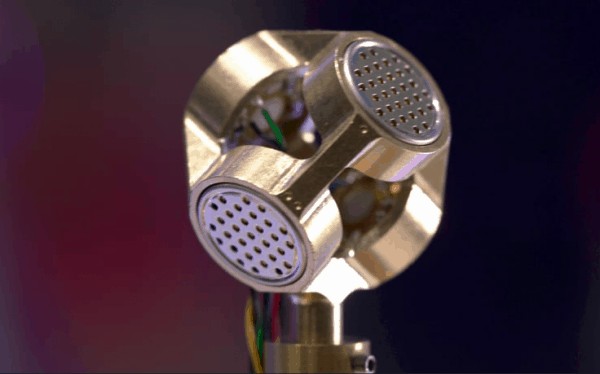They say that the best inventions are the simple ones. This microphone may not have been simple to design, but in theory, it simplifies the process of recording in immersive audio. Instead of using loads of microphones, why not use just one, which picks up sound equally from all directions? It’s a ground-breaking endeavor and makes sense, really.
The AMBEO VR microphone makes its surround recordings by taking “tetrahedral” recordings using four KE14 condenser capsules. Tetrahedral recording is nothing new in itself, as it dates back to the 1970s. However, being condensed into one microphone is pretty new, and with new technology by AMBEO to better understand and process the 3D audio field, this VR mic is of exceptional quality.

The “Ambisonic” software needed to process the signal can either be downloaded from Sennheiser, or third-party options can process the sound. Nuendo is an example of software from a third party that can take your raw recording and turns it into four channels of ambisonic audio - the industry-standard for VR - leaving you with a finished mix. You can export in stereo if need be, too.
You might think that the sound recorded is pretty “set in stone” from this microphone. One of the benefits of recording from multiple mics is the fact that the audio from each can be tailored and manipulated. Actually, the AMBEO mic allows for this, too. There are four different channels, and as explained on the manufacturer’s website, the sound is spherically captured by ambisonic technology and rendered binaurally for playback, so you can “virtually rotate the orientation of the perspective in all directions, horizontally and vertically.” What people are looking for when it comes to this type of microphone is control over the stereo field and where the sound is coming from; this ability isn’t sacrificed by having the mic in one handy package.
There are a lot of other brilliant features for which to praise the microphone itself. It requires phantom power, which is to be expected from a high-fidelity condenser microphone. The frequency response is superb whether you want to pick up low bass rumbles or higher sounds like the tweeting of birds.

The applications for this mic are many:
- Field recordings that can later be used in audio mixes, either for special effects or even as part of a musical project.
- Foley sounds, the sound effects that get added to films to amplify audio quality. Recording foley artistry using a microphone like this can give a full stereo field, unlocking exciting VR and immersive possibilities for a more realistic sound.
- Orchestral recordings. This makes a great “room mic” for picking up all of the sounds within the room or auditorium you are in.
- Creative audio recording. There is no reason why you can’t record a guitar or other individual instrument with the microphone, and you can pick up nuanced detail and a 3D sound in the process. You can even try creative vocal recordings.
- Soundscapes. Building a soundscape for use in a VR app, visual project, or 3D, the immersive audio project is easier than ever with the AMBEO VR mic.
In terms of setup, this mic uses XLR connectors and needs a multi-channel recording device to operate. It also requires phantom power to operate. It comes with a windshield and its own Sennheiser packaging to keep it secure and neat. Most audio engineers will already have the equipment needed to get started using the Sennheiser AMBEO VR mic, and the only adjustment is the fact that you will need to convert the signal for use in your DAW or use a specific 3D audio DAW.
This microphone is something of a trailblazer for those who love immersive audio. We expect to see other manufacturers follow suit, with their own offerings that are similar to the AMBEO VR Microphone. For field recordings as well as studio use, this can give engineers the opportunity to explore new space within their work.
Support IAA by purchasing the Sennheiser Ambeo VR Microphone!

